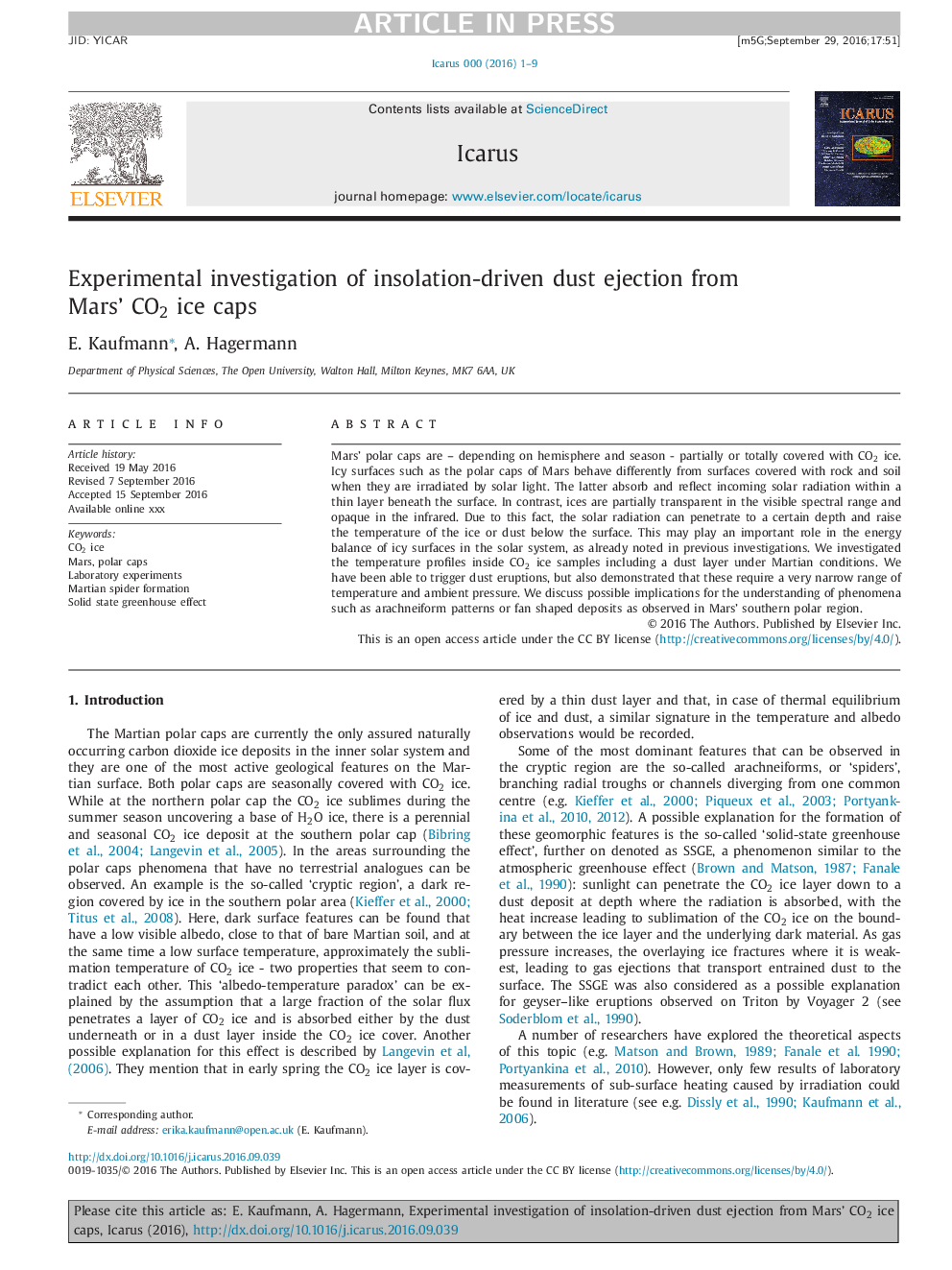| Article ID | Journal | Published Year | Pages | File Type |
|---|---|---|---|---|
| 5487408 | Icarus | 2017 | 9 Pages |
Abstract
Mars' polar caps are - depending on hemisphere and season - partially or totally covered with CO2 ice. Icy surfaces such as the polar caps of Mars behave differently from surfaces covered with rock and soil when they are irradiated by solar light. The latter absorb and reflect incoming solar radiation within a thin layer beneath the surface. In contrast, ices are partially transparent in the visible spectral range and opaque in the infrared. Due to this fact, the solar radiation can penetrate to a certain depth and raise the temperature of the ice or dust below the surface. This may play an important role in the energy balance of icy surfaces in the solar system, as already noted in previous investigations. We investigated the temperature profiles inside CO2 ice samples including a dust layer under Martian conditions. We have been able to trigger dust eruptions, but also demonstrated that these require a very narrow range of temperature and ambient pressure. We discuss possible implications for the understanding of phenomena such as arachneiform patterns or fan shaped deposits as observed in Mars' southern polar region.
Related Topics
Physical Sciences and Engineering
Earth and Planetary Sciences
Space and Planetary Science
Authors
E. Kaufmann, A. Hagermann,
